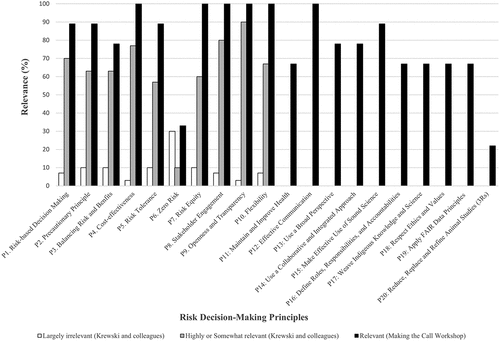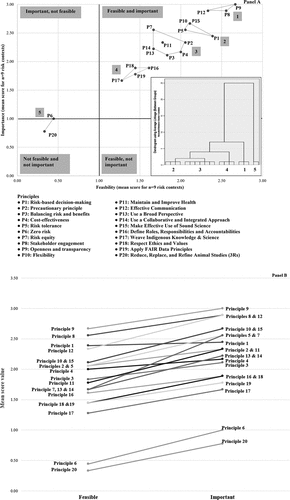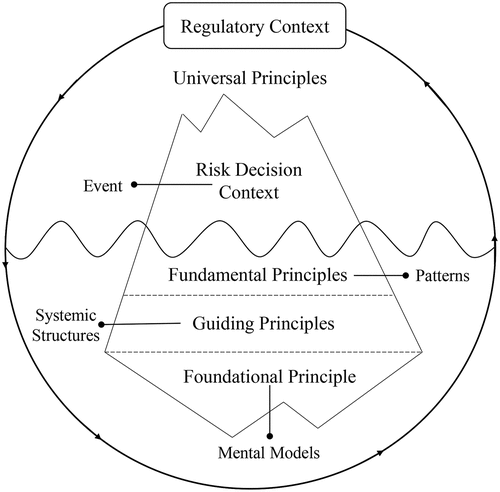Figures & data
Table 1. Crosswalk between ten risk decision principles and decision-making steps.
Table 2. Consolidated listing of risk decision-making principles.
Figure 1. Relevance of risk decision-making principles across diverse risk contexts.

Table 3. Relevance of principles P1 through P10 in ten risk decision contexts* (relevant principles**).
Figure 2. Association between feasibility and importance of risk decision-making.
Panel A shows that the 20 decision-making principles fall into one of five clusters. Cluster 1 includes universal decision-making principles which are mostly risk context-independent and apply to several health and environmental risk decision-making contexts. Clusters 2 and 3 are key for health and environmental risk decision-making, but their application is risk context-specific. Cluster 4 includes principles reflecting contemporary public administrative values, are context-specific, and can help guide the risk decision-making process. Cluster 5 includes principles outside the Go-zone and consequently are not considered as decision-making principles. Panel B shows the linear relationship between the two factors, feasibility and importance, for each of the twenty principles. In all cases, importance is ranked higher than feasibility for the same principle.

Figure 3. Schematic representation of different types of risk decision-making principles within the regulatory context.

